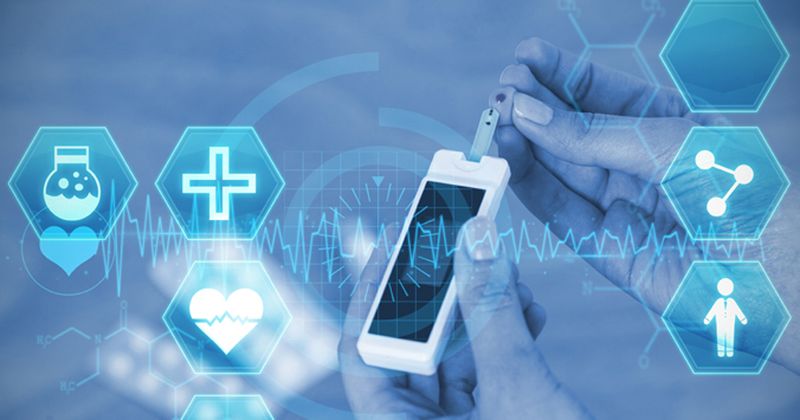Spanish-language app improves HbA1c for Hispanic adults with type 2 diabetes
Use of a glucose meter with color-coded range indicators paired with a Spanish-language mobile app reduced HbA1c in a cohort of predominantly underserved Hispanic participants with type 2 diabetes, according to study data.
In the Tu Salud clinical trial, participants using a OneTouch Verio blood glucose meter (LifeScan) connected with a Spanish-language version of the OneTouch Reveal mobile app were able to lower their HbA1c at 12 weeks and sustained the reduction at 24 weeks. Participants also reported improvements in diabetes treatment satisfaction scores after use of the new blood glucose meter.

“The tools were well received by the patients from the diabetes clinic at La Comunidad Hispana in Kennett Square, Pennsylvania, and may have important utility in other low-numeracy, low-literacy populations,” Larry Katz, PhD, formerly the senior director for worldwide clinical affairs and clinical operations at LifeScan Global Corp. in Malvern, Pennsylvania, told Healio.

Katz and colleagues enrolled 120 participants aged 18 to 70 years with diabetes for at least 3 months and HbA1c of 7.5% or higher who were using a blood glucose meter at home into Tu Salud, a 24-week, parallel-arm, open-label randomized controlled partial crossover trial. All participants were recruited from La Comunidad Hispana Health Center; about 95% were Hispanic or Latino. Adults were randomly assigned to a test (n = 81) or control group (n = 39). The test group was provided the new blood glucose meter and mobile app at baseline, whereas the control group began the trial using their own glucose meter without connectivity to an app. HbA1c measurements and medical history were collected at baseline and the Diabetes Treatment Satisfaction Questionnaire (DTSQ) conducted for all participants.
Users of the new blood glucose meter had data transmitted directly to the app. The meter included color-coded glucose range indicators for ease of use by people with low numeracy. Providers reviewed a 14-day report for each participant and would text them an emoji and brief comments based on the report. At 12 weeks, HbA1c was collected and the DTSQ conducted for all participants. The control group crossed over to use the new meter and mobile app at 12 weeks, with the test group continuing use of the meter and app. A final HbA1c measurement and DTSQ took place at 24 weeks. The findings were published in Diabetes Spectrum.
Lower HbA1c with glucose meter
At baseline, about two-thirds of participants said they were “overwhelmed” by their diabetes. The test group had a mean HbA1c of 9.57% and the control group a mean HbA1c of 9.47%.
After 12 weeks of using the new blood glucose meter, the test group had an individual paired mean reduction in HbA1c of 0.99% (P < .001), with the improvement sustained at 24 weeks. The mean HbA1c of the control group dropped to 8.82% at 12 weeks. After crossing over to the OneTouch Verio blood glucose meter and OneTouch Reveal app, there was a further 0.55% mean reduction in HbA1c at 24 weeks for control participants (P < .001). Reductions in HbA1c were the same in adults with low and high numeracy scores.
Treatment satisfaction improves
At 12 weeks, the test group had improved diabetes treatment satisfaction on five of eight questions compared with the satisfaction expressed in the control group (P < .05). At 24 weeks, the test group continued to show diabetes treatment satisfaction improvement on six of the eight questions, and the control group also had a greater degree of satisfaction compared with week 12.
The most frequent text message shared by providers was “diabetes on track,” with 98% of participants seeing the message at least once. About 39% of participants received messages related to diet, food, lifestyle and exercise, and more than 28% received at least one message related to their blood glucose monitoring. Most participants said the use of color-coded range indicators helped them understand when their glucose was outside of the target range.
“Two-thirds of the patients in the study expressed a feeling of being ‘overwhelmed’ by their diabetes, roughly double the frequency seen in other populations,” Katz said. “They also expressed a lower feeling of confidence in using numbers to understand information. The tools used in the study gave meaning to the patients’ glucose numbers and diabetes app messages and fostered greater understanding and confidence in how to manage their diabetes.”
Katz said more research is needed to see if the device and app provide sustained changes in behavior, medication adherence, lifestyle changes and decreased long-term diabetes complications.
For more information:
Larry Katz, PhD, can be reached at larrykatz@comcast.net.


